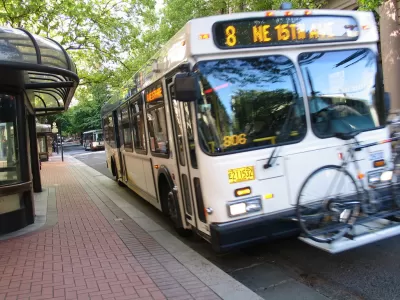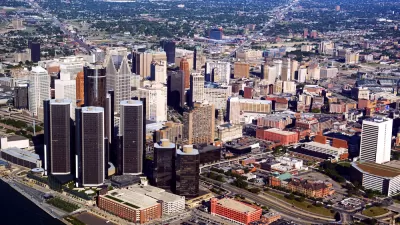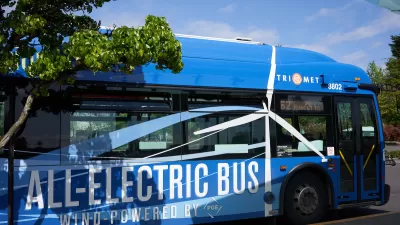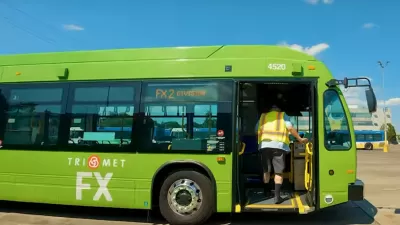Blogger and transit consultant Jarrett Walker paints a picture of Portland's Line 75, a workaday bus serving urban neighborhoods outside downtown. His reflections on radial and orbital journeys are worth a read.

Jarrett Walker gives us a thoughtful look at the way buses work in Portland, Oregon. He writes, "Fortunate people often assume that transit is only for going downtown, because that's the only place where driving is difficult enough that it's an option for them. But for most people, transit is for going everywhere across the city, especially to the more economically diverse jobs and opportunities that tend to be everywhere but downtown."
Portland's Line 75 follows an orbital route, intersecting downtown commuter routes but never going through the center itself. "And instead of hauling big volumes of commuters into and out of downtown, [orbital lines] serve thousands of little trips that are all a bit different, among diverse neighborhoods and destinations. It works: these orbital lines are among the busiest in the city."
Walker says most of our thinking about cities focuses on the radial, not the orbital. "Grand narratives about urban history are also about in-vs.-out. Distance from the center has always been a statement about power, even if its significance has flipped every 50 years."
"The marks of this pulsing oscillation are brutally obvious if you go inward or outward, but if you follow an orbital path, as the 75 does, you encounter more subtlety. History and power flow across the 75 more than along it, but as they do they surge and eddy in fractal patterns, even as a few rocks standing firm against their current."
FULL STORY: Riding against the Grain: Line 75

Manufactured Crisis: Losing the Nation’s Largest Source of Unsubsidized Affordable Housing
Manufactured housing communities have long been an affordable housing option for millions of people living in the U.S., but that affordability is disappearing rapidly. How did we get here?

Americans May Be Stuck — But Why?
Americans are moving a lot less than they once did, and that is a problem. While Yoni Applebaum, in his highly-publicized article Stuck, gets the reasons badly wrong, it's still important to ask: why are we moving so much less than before?

Using Old Oil and Gas Wells for Green Energy Storage
Penn State researchers have found that repurposing abandoned oil and gas wells for geothermal-assisted compressed-air energy storage can boost efficiency, reduce environmental risks, and support clean energy and job transitions.

Minneapolis Bans Rent-Setting Software
Four cities have enacted restrictions on algorithmic software that can inflate rent costs.

Oakland to Add 244 New EV Chargers
Oakland plans to launch its new charging network at eight locations by the end of 2025.

Jane Goodall Inspires with Message of Hope, Resilience, and Environmental Action
Speaking in Pasadena, Jane Goodall offered a hopeful and inspirational message, urging global compassion, environmental responsibility, and the power of individual action to shape a better future.
Urban Design for Planners 1: Software Tools
This six-course series explores essential urban design concepts using open source software and equips planners with the tools they need to participate fully in the urban design process.
Planning for Universal Design
Learn the tools for implementing Universal Design in planning regulations.
Heyer Gruel & Associates PA
City of Moreno Valley
Institute for Housing and Urban Development Studies (IHS)
City of Grandview
Harvard GSD Executive Education
Salt Lake City
NYU Wagner Graduate School of Public Service
City of Cambridge, Maryland





























